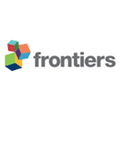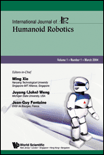
Cyborg and Bionic Systems
Scope & Guideline
Elevating Understanding of Cyborgs and Bionics
Introduction
Aims and Scopes
- Biohybrid Systems and Soft Robotics:
Research in this area explores the creation and application of soft robots and biohybrid systems that leverage biological materials or mimic biological functions, such as muscle-like actuators and soft robotic grippers. - Brain-Computer Interfaces and Neurotechnology:
The journal covers advancements in brain-computer interface (BCI) technologies, focusing on how these systems can facilitate communication and control between humans and machines, often integrating neural signals for real-time applications. - Rehabilitation Robotics and Prosthetics:
A significant focus of the journal is on the design and development of robotic devices for rehabilitation and prosthetic applications, emphasizing user-centric designs that promote mobility and independence for individuals with disabilities. - Robotic Control Systems and Machine Learning:
The integration of advanced control systems and machine learning techniques in robotics, particularly for improving the adaptability and functionality of robotic systems in dynamic environments. - Micro and Nanorobotics:
Research on microrobots and nanorobots for biomedical applications, including targeted drug delivery, cellular manipulation, and diagnostic tools, is a core area of focus.
Trending and Emerging
- AI and Machine Learning in Robotics:
There is a growing trend towards incorporating artificial intelligence and machine learning techniques in robotic systems, enhancing their ability to learn from and adapt to their environments. - Wearable and Implantable Devices:
Research focusing on wearable and implantable technologies that monitor health and enhance human capabilities is increasing, driven by advancements in biocompatible materials and miniaturization. - Neuroscience-Inspired Robotics:
An emerging theme is the application of insights from neuroscience to inform the design of robotic systems, particularly in understanding and replicating human motor control and sensory processing. - Sustainable and Biodegradable Materials in Robotics:
The use of sustainable and biodegradable materials in the design of robotic systems is gaining traction, driven by increasing awareness of environmental impacts and the need for eco-friendly technologies. - Collaborative Human-Robot Interaction:
Research on collaborative robots (cobots) that work alongside humans in various settings, including healthcare and manufacturing, is becoming more prevalent, highlighting the importance of intuitive human-robot interaction.
Declining or Waning
- Traditional Mechanical Robotics:
There has been a noticeable decrease in publications centered on traditional mechanical robotics that do not incorporate biological or soft materials, indicating a shift towards more bioinspired and adaptable designs. - Static Prosthetic Devices:
Research on static or non-adaptive prosthetic devices appears to be waning, as the field increasingly favors dynamic and responsive solutions that integrate advanced sensors and control systems. - Basic Sensor Technologies:
The journal has seen fewer studies focusing solely on basic sensor technologies without integration into more complex systems, reflecting a trend towards interdisciplinary approaches that combine sensors with robotics and AI.
Similar Journals

Industrial Robot-The International Journal of Robotics Research and Application
Advancing Robotics Knowledge for a New EraIndustrial Robot-The International Journal of Robotics Research and Application is a premier academic journal published by Emerald Group Publishing Ltd in the United Kingdom. Since its inception in 1973, the journal has established itself as a critical resource for the advancement of knowledge in the fields of robotics and automation. With an impressive Q2 ranking across several categories, including Computer Science Applications, Control and Systems Engineering, and Industrial and Manufacturing Engineering, it places itself among the top-tier journals in its domain. The journal aims to disseminate high-quality research that addresses contemporary challenges and innovations in robotics, thereby supporting both academic inquiry and practical applications in industry. Researchers, professionals, and students are encouraged to contribute to its mission, as it remains vital for those seeking to engage with the ever-evolving landscape of robotic technologies.

ROBOTICS AND AUTONOMOUS SYSTEMS
Leading the Charge in Robotics and Automated Technologies.ROBOTICS AND AUTONOMOUS SYSTEMS, published by Elsevier, is a leading journal in the fields of robotics and automation, providing a platform for the dissemination of high-quality, peer-reviewed research. With an impressive impact factor and a prestigious reputation, this journal is classified in the Q1 category for major fields including Computer Science Applications, Control and Systems Engineering, Mathematics, and Software as of 2023. The journal boasts an extensive archive dating back to 1988, reflecting the evolution of the discipline and fostering innovative research discussions that are crucial for advancements in autonomous technologies. Researchers, professionals, and students are encouraged to contribute to and benefit from the ongoing dialogue within these dynamic fields. Accessible through various academic resources, ROBOTICS AND AUTONOMOUS SYSTEMS stands as a pivotal information source for those dedicated to exploring the frontiers of intelligent systems.

Frontiers in Neurorobotics
Fostering Interdisciplinary Collaboration in NeuroroboticsFrontiers in Neurorobotics is a leading open access journal that bridges the fields of artificial intelligence and biomedical engineering, dedicated to advancing the understanding and application of neural mechanisms in robotics. Published by FRONTIERS MEDIA SA in Switzerland, this journal has been disseminating innovative research since its inception in 2007. With an aim to foster interdisciplinary collaboration and share cutting-edge findings, Frontiers in Neurorobotics holds a commendable position in the academic landscape, ranking in the Q2 category for both Artificial Intelligence and Biomedical Engineering as of 2023. Researchers will find it particularly valuable due to its broad scope, which encompasses everything from theoretical frameworks to practical applications in neurorobotics. The journal is committed to open access, ensuring that its contents are readily available to a global audience, thus enhancing visibility and engagement with trailblazing research in this dynamic field.

Advanced Intelligent Systems
Empowering Research in Intelligent Materials and Systems.Advanced Intelligent Systems, published by WILEY, stands as a prominent Open Access journal dedicated to the interdisciplinary exploration of intelligent systems, with a focus on materials science, engineering, and computer science. Since its establishment, the journal has fostered innovative research, providing a platform for the dissemination of findings that push the boundaries of artificial intelligence, human-computer interaction, and systems engineering. Although it is relatively new, having converged from 2023 to 2024, it ranks within various Scopus categories, showcasing its growing influence in fields such as mechanical engineering and computer vision. With an emphasis on accessibility, the journal has been Open Access since 2019, ensuring that cutting-edge research is available to a global audience of researchers, professionals, and students, thus driving forward the frontiers of intelligent systems development.

Applied Bionics and Biomechanics
Innovating the Future of BioengineeringApplied Bionics and Biomechanics, published by HINDAWI LTD, is a leading open-access journal dedicated to the interdisciplinary integration of biological and engineering principles, particularly within the realms of bioengineering, biomedical engineering, and biotechnology. With an ISSN of 1176-2322 and E-ISSN of 1754-2103, the journal operates out of the United Kingdom since its inception in 2003, providing a vital platform for the dissemination of innovative research and practical applications that enhance our understanding of biomechanical systems. Although the journal's coverage was discontinued in Scopus after 2023, it remains a valuable resource for researchers, professionals, and students, highlighted by its Q3 ranking across multiple categories, underlining its respectable position within the academic community. The journal encourages open sharing of ideas, fostering collaboration among diverse scientific fields, with the objective of addressing complex challenges in the interface of biology and engineering.

Frontiers in Robotics and AI
Shaping Tomorrow's Technologies with Cutting-Edge ResearchFrontiers in Robotics and AI is a leading journal dedicated to the exploration and dissemination of groundbreaking research in the fields of robotics and artificial intelligence. Published by FRONTIERS MEDIA SA in Switzerland, it has established itself as a vital resource for academics, professionals, and students since its inception in 2014. With an impressive Open Access model, the journal ensures that high-quality research is accessible to a global audience, fostering collaboration and innovation. The journal is recognized for its distinguished impact in the academic community, achieving Q2 quartile rankings in both Artificial Intelligence and Computer Science Applications as of 2023. It currently holds a solid position in Scopus rankings, with a rank of #123 out of 350 in Artificial Intelligence and #223 out of 817 in Computer Science Applications, reflecting its robust contribution to these dynamic disciplines. The journal's scope encompasses a wide range of topics, including but not limited to autonomous systems, machine learning, and human-robot interaction, making it an essential platform for innovative ideas and advanced research.

INTERNATIONAL JOURNAL OF ROBOTICS RESEARCH
Shaping Tomorrow's Robotics Landscape TodayINTERNATIONAL JOURNAL OF ROBOTICS RESEARCH (ISSN: 0278-3649, E-ISSN: 1741-3176), published by SAGE PUBLICATIONS LTD, is a leading journal in the fields of robotics and engineering. With an impressive impact factor and recognized as a Q1 journal in various categories including Applied Mathematics, Artificial Intelligence, Electrical and Electronic Engineering, Mechanical Engineering, Modeling and Simulation, and Software, it has established itself as an essential resource for researchers and practitioners alike. The journal covers a wide array of topics relevant to the advancing disciplines of robotics, ensuring comprehensive perspectives on both theoretical and practical applications. Notably, it ranks at the top percentile in Scopus rankings across multiple fields, which underscores its significance in the research community. Published continuously since 1982, the journal invites submissions that push the boundaries of robotics research, offering a platform for innovative ideas and solutions that address complex engineering problems. While it operates under a subscription model, its vast reach and reputation make it an invaluable resource for advancing knowledge in robotics.

International Journal of Humanoid Robotics
Shaping Intelligent Machines through Interdisciplinary InsightInternational Journal of Humanoid Robotics, published by World Scientific Publishing Co Pte Ltd, is a leading platform for researchers and practitioners in the fields of artificial intelligence and mechanical engineering. With an ISSN of 0219-8436 and an E-ISSN of 1793-6942, this journal has established itself as a significant resource since its inception in 2004. Spanning various topics from robotic design and control to human-robot interaction, it serves a diverse interdisciplinary audience. The journal’s impressive ranking in the Scopus database, positioned in the third quartile for both categories in 2023, reflects its growing impact in the academic community. Although not open access, the journal provides crucial insights that advance the understanding of humanoid robotics and foster innovative solutions to real-world challenges. Researchers, professionals, and students are encouraged to engage with this essential resource as it continues to shape the future of robotics through rigorous scientific inquiry and scholarly collaboration.

Annual Review of Control Robotics and Autonomous Systems
Pioneering Research in Control and Autonomous SystemsAnnual Review of Control Robotics and Autonomous Systems, published by ANNUAL REVIEWS, is a premier, peer-reviewed journal dedicated to advancing the field of control, robotics, and autonomous systems. With its E-ISSN of 2573-5144, the journal is recognized for its high-caliber contributions, evidenced by its Q1 ranking in key categories, including Artificial Intelligence, Control and Systems Engineering, and Human-Computer Interaction. Spanning converged years from 2018 to 2024, it serves as an essential resource for researchers, professionals, and students who seek to stay abreast of the latest developments and methodologies impacting these rapidly evolving fields. The journal does not currently offer Open Access options, which enables it to maintain stringent quality control while ensuring that every issue is packed with scholarly articles that meet the highest academic standards. With a focus on interdisciplinary approaches and cutting-edge technologies, the Annual Review of Control Robotics and Autonomous Systems is poised as a critical voice for scholarly discourse, fostering innovation and collaboration in tackling complex challenges of the modern world.

International Journal of Advanced Robotic Systems
Exploring Innovations in Robotic SystemsThe International Journal of Advanced Robotic Systems is a premier academic journal, published by SAGE Publications Inc., dedicated to fostering innovation and research in the rapidly evolving field of robotics. With an ISSN of 1729-8814, this Open Access journal has been providing unrestricted access to cutting-edge research since 2004, making it an invaluable resource for researchers, professionals, and students alike. The journal aims to disseminate high-quality, peer-reviewed articles that cover a wide range of topics, including but not limited to robotic systems, automation, artificial intelligence, and sensor technologies. By promoting interdisciplinary collaboration and encouraging novel approaches, the International Journal of Advanced Robotic Systems plays a crucial role in advancing the frontiers of robotics and ensuring its impactful application across various industries. Engaging with this journal not only keeps you at the forefront of the latest developments but also contributes to the global discourse on robotics and its advancements in science and technology.